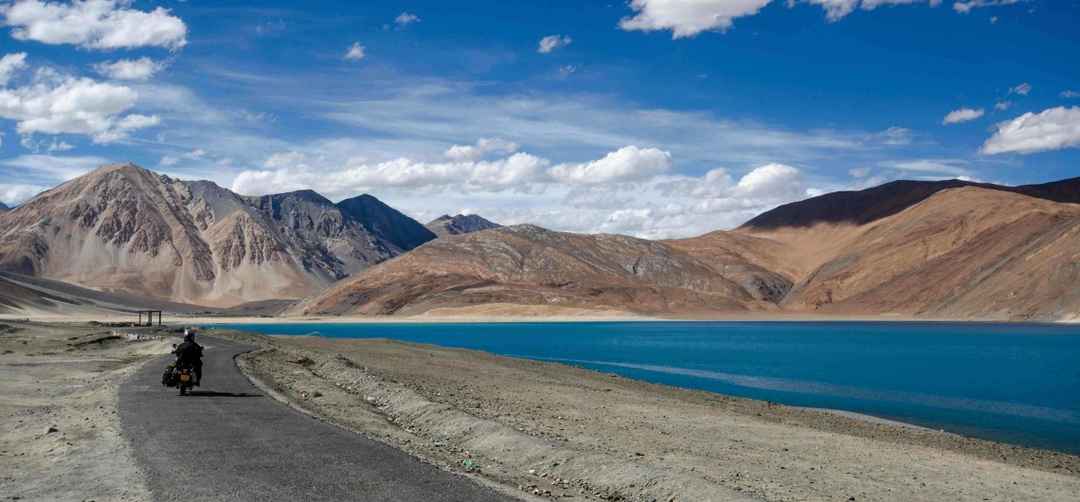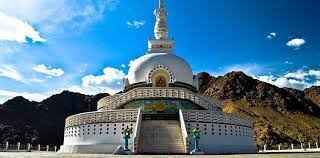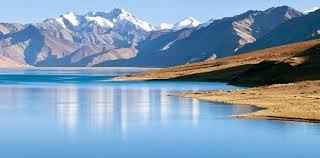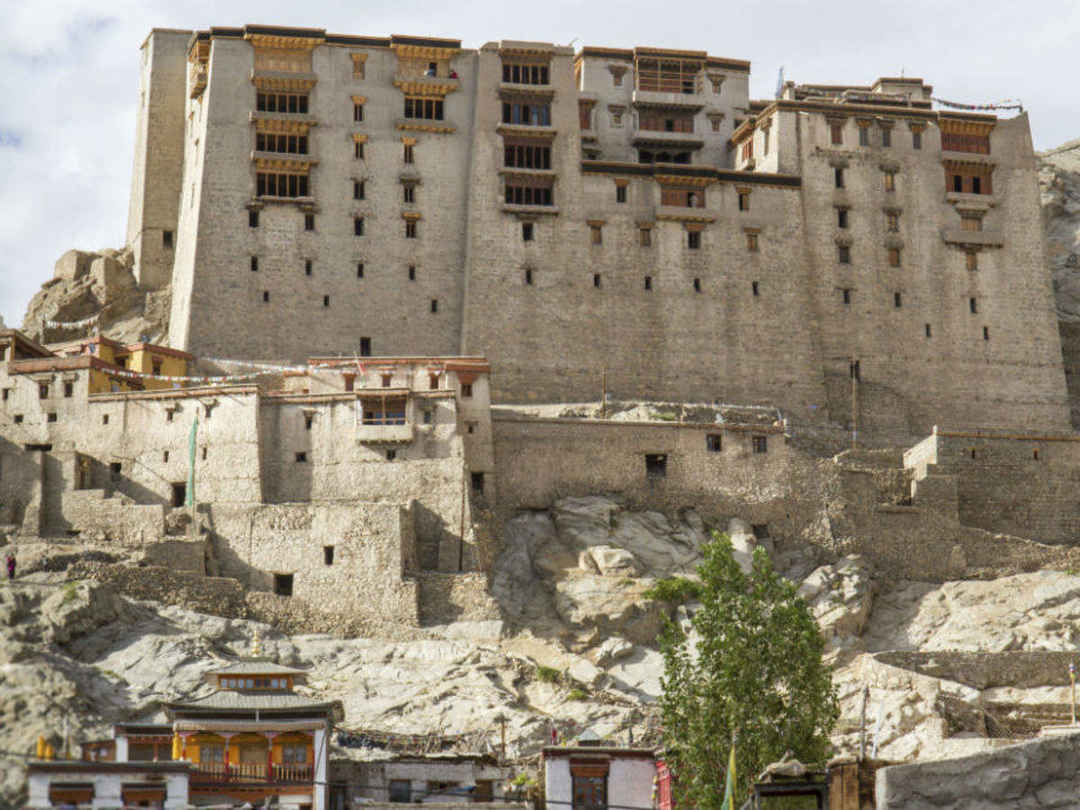01. Pangong Tso Lake

Pangong Tso or Pangong Lake is an endorheic lake spanning eastern Ladakh and West Tibet situated at an elevation of 4,225 m (13,862 ft). It is 134 km (83 mi) long and divided into five sublakes, called Pangong Tso, Tso Nyak, Rum Tso (twin lakes) and Nyak Tso. Approximately 50% of the length of the overall lake lies within Tibet China, 40% in Ladakh India and the rest is disputed and is a de-facto buffer zone between India and China. The lake is 5 km (3.1 mi) wide at its broadest point. All together it covers 604 km2. During winter the lake freezes completely, despite being saline water. It has a land-locked basin separated from the Indus River basin by a small elevated ridge, but is believed to have been part of the latter in prehistoric times.
The lake is in the process of being identified under the Ramsar Convention as a wetland of international importance. This will be the first trans-boundary wetland in South Asia under the convention.
2. Shanti Stupa

Shanti Stupa is a Buddhist white-domed stupa (chorten) on a hilltop in Chanspa, Leh district, Ladakh, in north India. It was built in 1991 by Japanese Buddhist Bhikshu, Gyomyo Nakamura and part of the Peace Pagoda mission. The Shanti Stupa holds the relics of the Buddha at its base, enshrined by the 14th Dalai Lama. The stupa has become a tourist attraction not only due to its religious significance but also due to its location which provides panoramic views of the surrounding landscape.
3. Tso Moriri Lake

Tso Moriri or Lake Moriri or "Mountain Lake", is a lake in the Changthang Plateau in Ladakh in Northern India. The lake and surrounding area are protected as the Tso Moriri Wetland Conservation Reserve.
The lake is at an altitude of 4,522 m (14,836 ft). It is the largest of the high altitude lakes entirely within India and entirely within Ladakh in this Trans-Himalayan biogeographic region. It is about 16 miles (26 km) north to south in length and two to three miles (3 to 5 km) wide. The lake has no outlet at present and the water is brackish though not very perceptible to taste.
The lake is fed by springs and snow-melt from the adjacent mountains. Most water enters the lake in two major stream systems, one entering the lake from the north, the other from the southwest. Both stream systems include extensive marshes where they enter the lake. It formerly had an outlet to the south, but this has become blocked and the lake has become an endorheic lake. The lake is oligotrophic in nature, and its waters are alkaline.
Accessibility to the lake is largely limited to summer season, though Karzok on the northwest shore and the military facilities on the eastern shores have year-round habitation.
4. Leh Palace

Leh Palace also known as Lachen Palkar Palace is a former royal palace overlooking the town of Leh, Ladakh, in the Indian Himalayas. It was constructed circa 1600 by Sengge Namgyal. The palace was abandoned when Dogra forces took control of Ladakh in the mid-19th century and forced the royal family to move to Stok Palace.
It is nine storeys high; the upper floors accommodated the royal family, while the lower floors held stables and store rooms. Much of the palace is in deteriorated condition, and little survives of its interior decorations.[2] The Palace Museum holds a rich collection of jewellery, ornaments, ceremonial dresses and crowns. Tibetan thangka or paintings, which are more than 450 years old, with intricate designs still retain the bright colours derived from crushed and powdered gems and stones. Structures around the palace's base include the prominent Namgyal Stupa, the colourfully muralled Chandazik Gompa and the 1430 Chamba Lhakhang, with medieval mural fragments located between the inner and outer walls.
Comments